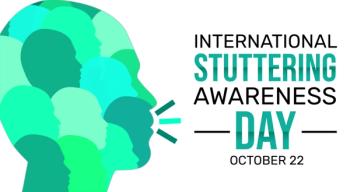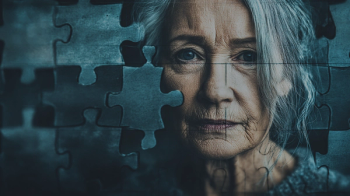
New Spinal Cord Center Offers More Than Local Services
Until recently, physicians assumed that any recovery from spinal cord injury (SCI) was limited to the first few months to a year after the injury occurred. In children, this window of opportunity for recovery could last about 2 years. Certainly, no one expected any significant recovery in any person with a chronic SCI or other condition that causes SCIs, such as a stroke, blood clots, or arteriovenous malformation affecting the spinal cord.
Functional Electrical Stimulation
For more information on FES, go to:
Spinal Cord Injury Association
www.sci-illinois.org/factsheets/funcelec.htm
National Spinal Cord Injury Association
www.spinalcord.org/html/factsheets/estimul.php
Until recently, physicians assumed that any recovery from spinal cord injury (SCI) was limited to the first few months to a year after the injury occurred. In children, this window of opportunity for recovery could last about 2 years. Certainly, no one expected any significant recovery in any person with a chronic SCI or other condition that causes SCIs, such as a stroke, blood clots, or arteriovenous malformation affecting the spinal cord.
However, John W. McDonald, MD, PhD, director of the International Center for Spinal Cord Injury (ICSCI) at the Kennedy Krieger Institute in Baltimore, said that this cutoff date for recovery doesn't apply to all patients. McDonald worked with the late Christopher Reeve, who was showing small gains in neuromuscular control years after his injury. For Reeve, McDonald prescribed activity-based therapies that mobilize the body. Such exercises, noted McDonald, can result in some long-term recovery.
On June 14, Kennedy Krieger opened the ICSCI. Although it is touted as a pediatric center, according to McDonald, "The center will serve both children and adults. The big new focus--the first for the country--is that we're providing restorative applications to all ages of children living with paralysis, not just SCI." Although most of the patients he's been treating at Kennedy Krieger suffer from traumatic or nontraumatic SCI, others have leukodystrophies (biochemical defects that may lead to abnormalities in myelinization or in nerve cells), transverse myelitis (inflammation of the spinal cord), Friedreich ataxia (a degenerative disease of the spinal cord), pediatric disorders equivalent to amyotrophic lateral sclerosis, and neurodevelopmental disorders.
McDonald has found that, although many of his patients are almost totally immobilized, his program of exercise stimulates endogenous neural stem cells within the nervous system to begin to repair the damage, leading to neuronal regeneration and acquisition of motor activity that had disappeared because of the injury. Functional electrical stimulation (FES) of muscles and nerves in patients with SCI is not new; the technique has been cited in the medical literature since at least the mid-1980s, and it probably dates back 2 more decades. However, bringing patients into a coordinated, wide-ranging program that uses various pieces of equipment, along with exercises, to stimulate muscle cell regrowth and neuronal repair is relatively new. It was widely publicized by Reeve and his family, although Reeve, according to McDonald, is an "extreme example" of the recovery that occurred in someone who "should never recover."
McDonald also cited the case of a 7-year-old girl who suffered a nervous system injury at birth that resulted in paralysis from the shoulders down. With FES and a regimen of therapy, "now she's walking without braces," said McDonald. FES has such a long history of research that commercially manufactured FES bicycles are available, and some models are small enough for a patient to use in the home.
People with SCIs can only do a limited amount of exercise; the amount depends on the level and completeness of the injury. Immobility leads to skin breakdown and pressure sores, osteoporosis, muscle atrophy, respiratory and cardiovascular problems, urinary tract infections, and many other life-threatening comorbidities (see Spinal Cord Injury: Dealing With More Than Inability to Move, Applied Neurology, January 2005, pp 32-34). However, explained McDonald, exercises such as riding an FES bicycle can lead to buildup of muscle mass and even repair of damaged neurons. Riding an FES bicycle stimulates the muscles and nerves locally with electrical impulses so that the patients, as McDonald said, can "ride on their bike even though their brains aren't running it."
Even if the muscle or nerve recovery is negligible, McDonald noted that "everyone can benefit" from such an exercise plan because "everyone who is living with immobility or disability doesn't get adequate exercise." Recovery, however, depends on the individual, he said.
The ICSCI offers its services to any patient who can come to the Baltimore site for an initial evaluation, said McDonald. An evaluation may take anywhere from an afternoon to a 2-week stay at the center. The ICSCI physicians will prescribe a home-based rehabilitation regimen and will train family members to assist the patient. They also will educate the patient's home physician, "partnering with their caregivers in their town," stated McDonald. After the patient is sent home, he or she will be monitored by the local physician and will return to Kennedy Krieger for a 6-month follow-up, and once a year thereafter. Most important, stated McDonald, "Many aspects of this are already covered by insurance, or we work to get it covered."
McDonald explained that this type of regimen is "more doable with children." He referred to them as being not as "gravitationally challenged" as adults. He added that they also do not accept that something is impossible. This type of exercise program is not short-term. It will extend throughout the patient's lifetime, but it can greatly decrease health problems related to the SCI.
The Kennedy Krieger Institute is at 707 N. Broadway, Baltimore, MD 21205. Referral numbers are 888-554-2080 or, locally, 443-923-9400; online access is at www.kennedykrieger.org. *
Newsletter
Receive trusted psychiatric news, expert analysis, and clinical insights — subscribe today to support your practice and your patients.













